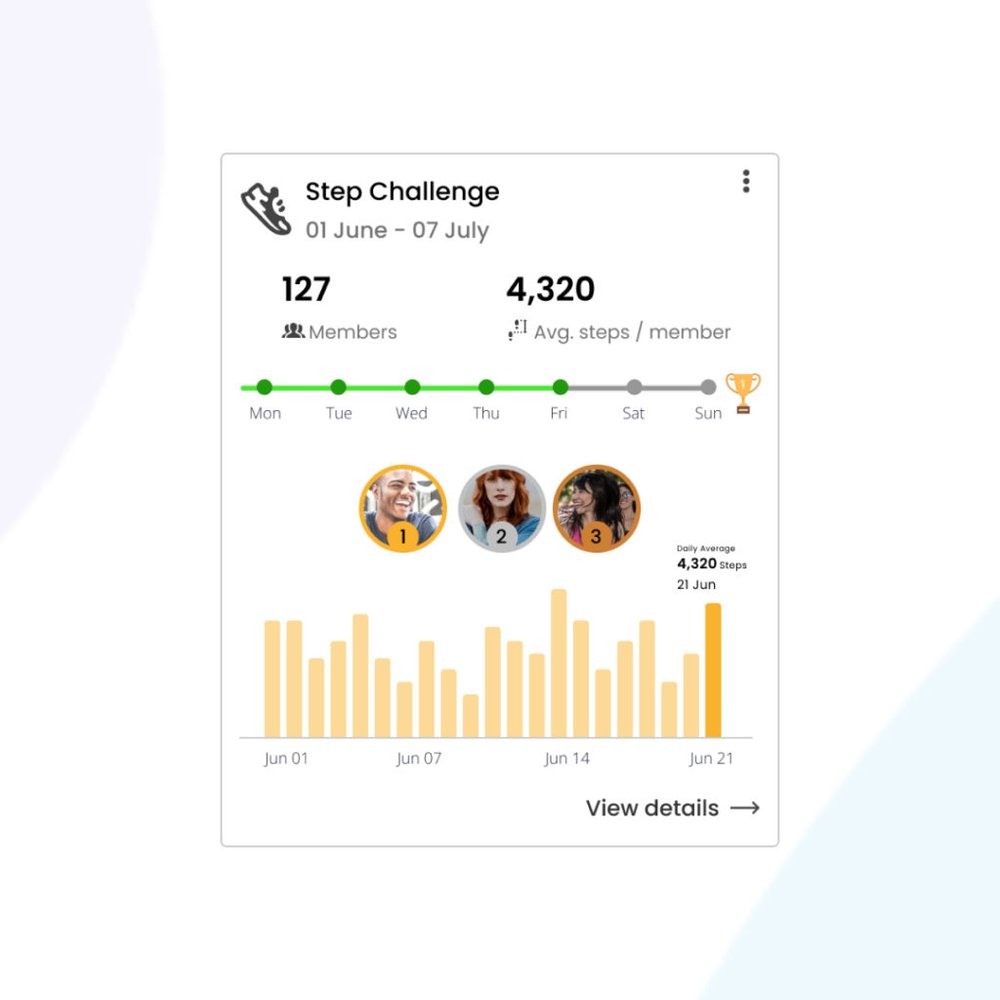Workplace step challenges are a great way to get your employees moving and improve their overall health. They can also help to boost morale and productivity. And the best part is, they can be easy to create and manage.
Create a workplace step challenge in minutes
- Create a free account on Reaction. This platform provides all the tools you need to set up and manage your step challenge.
- Set up your challenge. In your admin dashboard, click on the “Step Challenge” option. Here, you can customize the start date, duration, and other settings to fit your team’s schedule and preferences.
- Launch your challenge. Once you configure your challenge, click “Launch” to make it live.
- Share the invitation link. Distribute the invitation link to your team so they can join the challenge and start tracking their steps.
1. What is a step challenge, and how does it benefit employees?
A step challenge is a friendly competition where participants aim to reach a specific number of steps each day. It’s a fun and effective way to encourage physical activity, improve cardiovascular health, reduce stress, and boost overall well-being.

2. How do I track participants' progress in a step challenge?
A Step challenge app can provide a user-friendly platform where participants can easily track their daily step count, compare their progress with others, and join team competitions.
3. What are some creative ways to incentivize participation in a step challenge?
Consider offering prizes, rewards, or friendly competitions to keep your team motivated. You can also create a leaderboard to track individual and team performance and celebrate top achievers.
4. How can I address challenges or obstacles that might arise during a step challenge?
Encourage participants to set realistic goals and listen to their bodies. If someone faces an injury or other obstacle, provide them with support and alternative activities.
5. Can a step challenge be customized to fit the specific needs and interests of my team?
Absolutely! You can tailor your step challenge to your team’s fitness levels, work schedules, and preferences. For example, you might offer different distance goals or create virtual walking tours.






